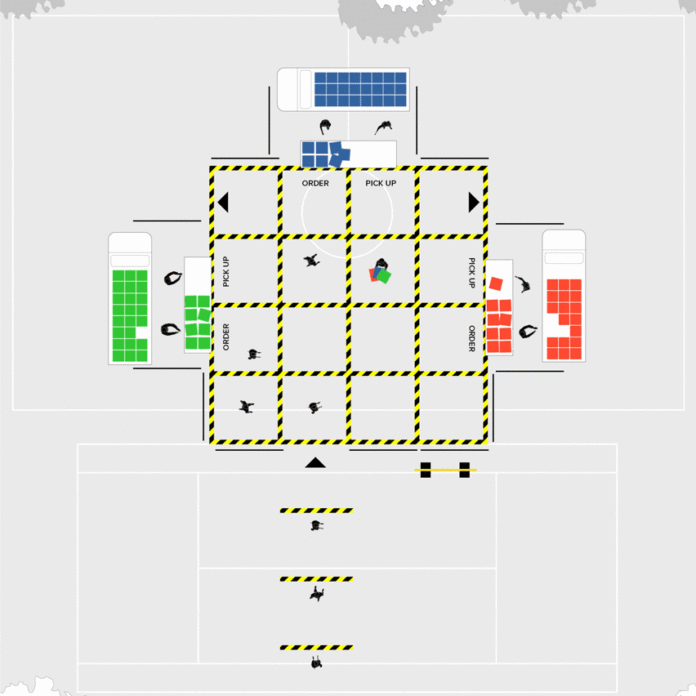Dutch studio Shift Architecture Urbanism has developed a model for a street food market where people can buy fresh produce without coming into contact with one another during the coronavirus pandemic.
Hyperlocal Micro Markets is a concept for a network of public markets, where customers can buy fruit and vegetables, dairy products, and meat and fish, without risking spread of coronavirus.The design consists of 16-square grids that can be easily set up in the public squares of any town or city, allowing people to shop local while also following social distancing guidelines.
Shift Architecture Urbanism developed the proposal in response to the decision made by many cities around the world – including Rotterdam, where it is based – to close or restrict their public markets.This is putting additional pressure on supermarkets, which can pose just as much of a contamination risk. Some people are having to wait in long queues to enter, only to find empty shelves when they eventually get in.”Even with protective measures it seems very difficult if not impossible to rule out the risk of contamination in traditional fresh produce markets,” said architects Thijs van Bijsterveldt, Oana Rades and Harm Timmermans.
Shift’s proposal is based around the idea that existing food markets could be split up and dispersed throughout local neighbourhoods. They call them “micro markets that operate on a hyper-local scale”.Each micro market consists of just three stalls, organised around the 16-square grid. There is one entrance but two exits, and each stall has two counters, one for order and one for collection. Only six people are allowed into the space at one time, but they are able to move freely around. The only rule is that only one person may occupy a square on the grid at a time.
The stalls sell packages rather than individual products, in order to reduce the time each customer spends.Setup and shutdown should be easy to manage too – markets traders are used to being flexible and mobile, setting up at different locations on different days.
Analysis:
The food market model gives inspirations on how to redesign the public space to fit in the pandemic. The grids can help control the concentration of customers, and the placing of entrance and exit can help direct the flow of customers to avoid reversing and concentrating. The other highlight is the flexibility and mobility of the model. As it is designed for the street food market, the assets can be easily moved and set up. I think it can be applied to movie theaters, to help control the flow and maintain the safety of the space between entrance, auditorium and exit.




